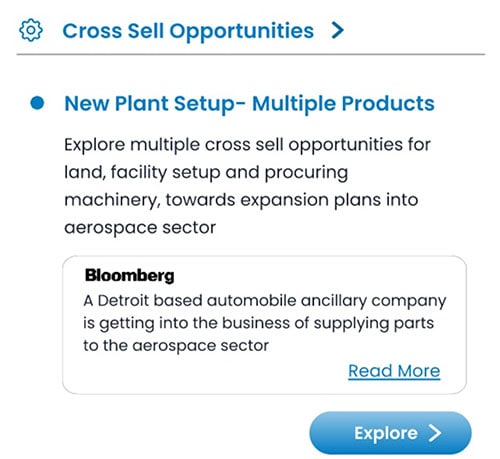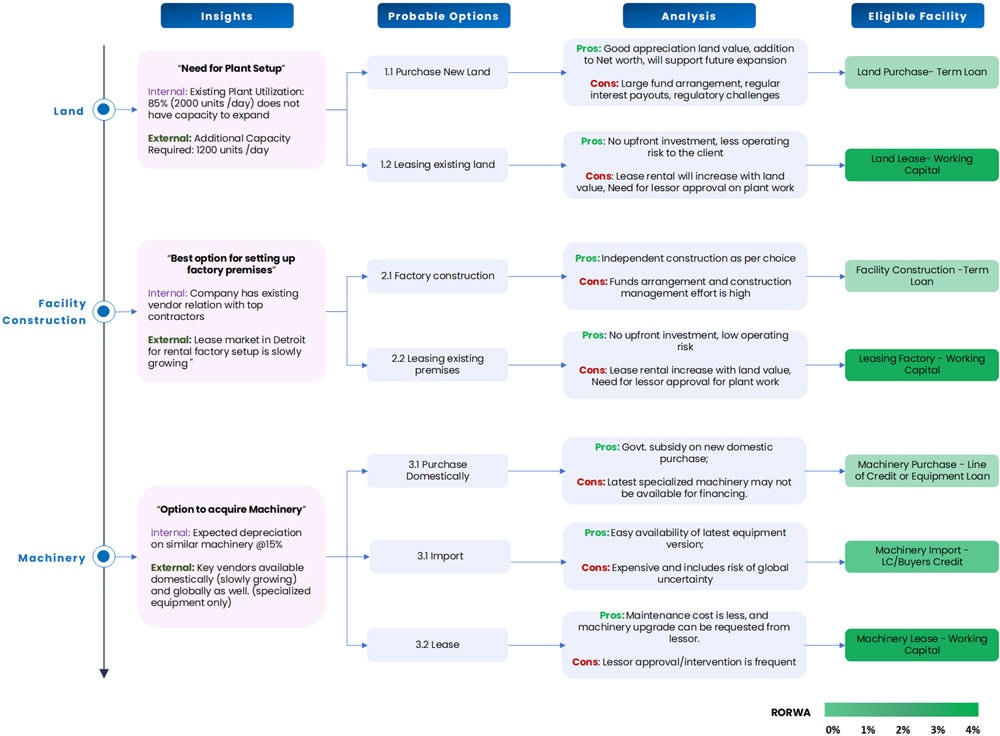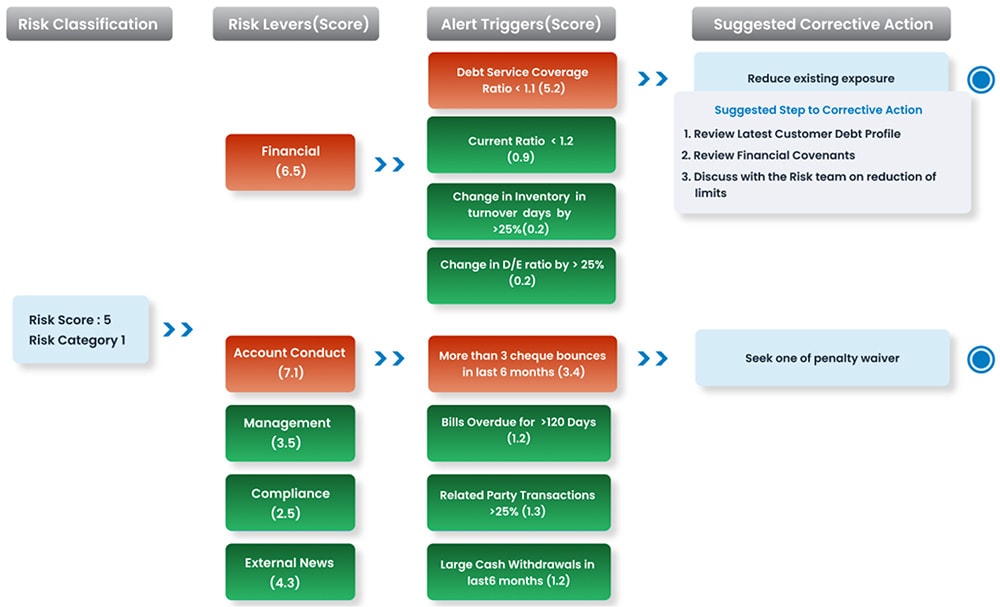
Insights
- Role is transforming: The role of corporate relationship managers is changing. With technology advancing, clients expecting more, and competition getting tougher, relationship managers now need to act more like strategic partners. They should offer advice that's really tailored to what their clients need.
- Digital engagement: Over 76% of corporate clients are regularly using mobile and online banking platforms. This shows a strong preference for digital engagement.
- Challenges: Relationship managers face challenges including administrative burdens, fragmented information sources, heuristic decision-making, regulatory complexity, intense market competition, lack of cross-functional coordination, and inadequate skills development.
- AI as an enabler: AI can act as a digital advisor and integrate seamlessly into workflows, provide actionable insights on a 360-degree client view, analyze opportunities, monitor portfolios and streamline routine processes.
- Roadmap for adoption: Infosys recommends a four-step roadmap to adopt corporate digital advisor applications strategically: (1) align visions; (2) review the existing technology landscape; (3) define a minimum viable product (MVP) in the launch plan; and (4) speed up development with a prototype-led approach. Encourage cross collaboration of business, IT, and partners.

AI for relationship managers: Smarter insights, deeper connections
Artificial intelligence is transforming corporate banking by streamlining workflows and surfacing real-time, data-driven insights—freeing relationship managers to focus on strategic advising and long-term client value instead of administrative tasks.
Corporate banking is built on personal relationships and trust. Strengthening both has proven difficult for corporate relationship managers as they navigate this digital era. Traditionally, these managers served as the face of the bank, providing personalized business advice and uncovering revenue opportunities through direct, in-person engagement.
As clients increasingly switch to digital channels, relationship managers have lost that personal touch in many activities, such as client onboarding and routine communications that are now accomplished digitally. More than 76% of corporate clients use mobile and online banking platforms regularly, reflecting a clear preference for digital engagement.
In addition, the role of a corporate relationship manager is undergoing a significant transformation driven by advancing technology, more demanding client expectations, and intensifying competition. Corporate clients no longer seek mere transactional relationships from their banks. They expect banks to function as strategic partners, offering tailored advice aligned with their needs. This expectation places relationship managers in a demanding position: They must balance a deep understanding of the client and financial expertise with agility and responsiveness.
These changes in commercial banking demand new, innovative approaches that enable corporate relationship managers to interact with their clients digitally, while maintaining the trusted advisory role that defines the banking value proposition.
How technology makes commercial banks more efficient
Banks that have embraced digital transformation on their corporate banking side report tangible benefits — mostly efficiency. Metro Commercial Bank, which serves small and medium-sized businesses, digitized its client onboarding by automating data entry, verification, and compliance. This digital transformation reduced onboarding time by 80%, cut data errors by 90%, boosted new client acquisitions by 30%, and positioned the bank as a digital leader.
While efficiency has been the easiest benefit to measure, there is significant upside still available. In 2023, corporate and commercial banking divisions globally accounted for 28% of total banking revenue, or $1.9 trillion — a significant amount that corporate relationship managers can influence. This presents opportunities for banks willing to invest in empowering their relationship managers but also creates new challenges in switching from old to new models.
Challenges confronting corporate relationship managers
The role of a corporate relationship manager requires juggling multiple priorities under significant pressure. The combination of human and digital interactions brings out several key challenges, both traditional and emerging.
- Administrative burden: Relationship managers at US commercial banks spend up to 60% of their time on administrative tasks. This inefficiency limits their ability to deepen client relationships and identify new revenue opportunities.
- Fragmented information sources: Accessing relevant client data often requires navigating disparate systems, which hinders timely decision-making and reduces the ability to provide holistic advice.
- Heuristic decision-making: Without comprehensive, data-driven insights, relationship managers rely on experience-based judgment and intuition, which may not accurately capture emerging risks or opportunities.
- Regulatory and compliance complexity: Increasingly stringent regulations impose additional layers of oversight and documentation, slowing processes and increasing operational risk.
- Intense market competition: Banks face heightened market competition from nimble fintechs and neobanks, a market that is expected to reach $3.4 trillion in 2032, from an estimated $210 billion this year. The rise of digital-first competitors demands faster, more innovative service delivery, forcing relationship managers to adapt quickly or risk losing clients.
- Lack of cross-functional coordination: Delivering comprehensive solutions requires seamless collaboration with credit, risk, and product teams, which is often hampered by organizational silos.
- Inadequate skills development: The rapid evolution of financial products and market conditions necessitates ongoing training, without which relationship managers risk falling behind.
These factors hinder relationship managers' productivity and client satisfaction, ultimately hurting banks’ profitability.
AI as a strategic enabler
Technology offers a clear path to overcome these obstacles and enhance corporate relationship managers’ effectiveness. The key lies in deploying applications that integrate seamlessly into their workflows, provide actionable insights, and automate routine processes, so relationship managers can focus on the most critical tasks — building relationships.
A purpose-built AI assistant can transform how corporate relationship managers operate daily. The following tasks can make relationship managers more efficient and provide them with better intelligence.
Streamline daily activities: The technology can automate administrative tasks and provide an intuitive interface that guides relationship managers through their workflows, reducing turnaround times and increasing efficiency. For example, a structured approach to task management includes intelligent prioritization of action items, streamlined meeting scheduling, alerts for high-priority tasks, and seamless aggregation of information from multiple systems into a unified workspace. This ensures relationship managers can focus on what matters the most, enhancing both efficiency and decision-making.
Feed internal and external data for a 360-degree client view: A complete view of the client relationship encompasses exposure, income and financials, wallet share movement, past interactions, supply chain data such as payables and receivables, and transaction trends. System-driven insights, such as withdrawal and engagement scores — derived using account activity and communication data — nudge relationship managers to intervene when required.
Figure 1. Digital snapshot of an AI assistant offering cross-selling opportunities based on external news

Source: Infosys Consulting, Infosys Knowledge Institute
AI-powered opportunity analysis: The AI-assistant integrates data from multiple internal and external sources to anticipate client needs (Figure 1), generate insights, and recommend tailored solutions. It also offers detailed analysis of opportunities (Figure 2) to suggest multiple options for relationship managers to choose from and present to clients, transitioning relationship managers from reactive to predictive advisory roles.
Figure 2. Screengrab of an AI assistant offering detailed opportunity analysis

Source: Infosys Consulting, Infosys Knowledge Institute
Robust portfolio monitoring: Proactive monitoring of client portfolios helps detect early signs of financial stress or opportunity, enabling timely intervention and risk mitigation (Figure 3). By performing causal analysis across multiple risk levers, with thresholds determined for various key risk indicators (KRIs), the AI-assistant measures and suggests corrective actions.
Figure 3. Digital snapshot of an AI assistant indicating a client’s financial distress and remediation measures

Source: Infosys Consulting, Infosys Knowledge Institute
Technology-driven client engagement: Automated meeting scheduling ensures seamless coordination, while AI-powered smart storyboards provide tailored preparation materials, drawing from client history and market insights. During meetings, NLP and sentiment analysis assess the client’s mood and engagement in real time, enabling relationship managers to adapt their approach dynamically. Post-meeting, the technology automatically generates accurate minutes, identifies actionable follow-ups, and streamlines the creation of tailored product proposals. This integrated, technology-assisted approach transforms client conversations — enhancing efficiency, deepening relationships, and ensuring every interaction is insight-driven and responsive to client needs.
Data-driven decisions: Embedding AI and advanced analytics within the application allows relationship managers to move beyond heuristic decision-making. These capabilities allow relationship managers to focus on personalized client interactions by automating routine inquiries and providing deep analytics on client behavior. Research shows that 90% of banking leaders have allocated budgets for generative AI projects this year, reflecting the industry’s commitment to using AI for tailored, smarter risk management decisions.
Client acquisition and personalized recommendations: Leveraging advanced analytics on transactional data, the AI assistant can support relationship managers in identifying promising new leads. For instance, graph analytics can map a client’s payments to reveal their buyer and supplier networks (Figure 4). Based on transaction patterns, AI can recommend relevant banking products such as invoice discounting for a client’s supplier.
Figure 4. Screenshot of an AI assistant’s graph network encapsulating the clients’ network
Source: Infosys Consulting, Infosys Knowledge Institute
Cross-platform workflow: An application that facilitates cross-departmental communication and task management improves internal coordination, reducing delays and miscommunication that can negatively impact client experience. This allows relationship managers to deliver comprehensive, timely solutions by bridging gaps between credit, risk, and product teams.
Figure 5. Architecture to implement an AI assistant with minimal disruption
Source: Infosys Consulting, Infosys Knowledge Institute
"AI-powered digital assistants will supercharge relationship manager effectiveness. The best relationship managers have always been trusted advisors. Digital assistants will cut through the noise–taking care of routine work, pulling insights from oceans of data, and spotting opportunities in real time–so relationship managers can focus on what really matters: strengthening client relationships, acting fast on smart decisions, and driving growth."
A structured roadmap to implement digital advisors
To realize the benefits, banks must approach the adoption of corporate digital advisor applications strategically. Infosys recommends the following four-step roadmap.
- Vision alignment: Begin with the development of conceptual solutions and involve all stakeholders. Define target personas, use cases, user journeys, channels, and high-level capabilities. Iterate on the solution concept using high-fidelity prototypes and secure formal sign offs. This step ensures the solution addresses the real-world needs of relationship managers and aligns with business goals.
- Solution architecture: Review the existing technology landscape to identify affected systems and platforms. Define technology and data requirements, including technology architecture. Evaluate and finalize third-party integrations. Onboard partners and finalize the technology architecture to ensure scalability, security, and interoperability.
- Launch plan: Define MVPs and outline “epics” and “features” for the complete solution. Develop a phased launch plan with clear schedules, dependencies, and risk mitigation strategies. Establish the target operating model and change management plan to support adoption and minimize disruption.
- Build and deploy: Detail user stories with a prototype-led approach to accelerate development. Coordinate closely with business units, technology teams, and partners. Act as a product owner to oversee development, ensuring the solution meets relationship managers’ needs and delivers expected outcomes.
Equip relationship managers to focus on relationships
While corporate relationship managers remain essential to serving banking clients, rising customer demands and regulatory complexity are forcing banks to adopt innovative technology to boost these managers’ efficiency.
A well-built AI-assistant can help corporate relationship managers reduce administrative tasks and offer personalized recommendations. But this transformation requires alignment across vision, architecture, and execution.
Banks that embrace this approach will deepen client relationships and drive sustainable business growth.
Key contributors - Shreekar Sudarshan, Dheeraj Rajpal and Somya Mishra







